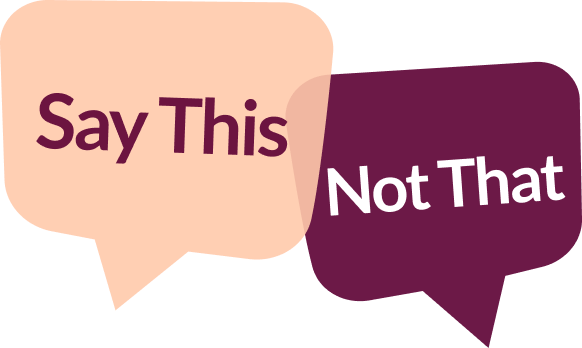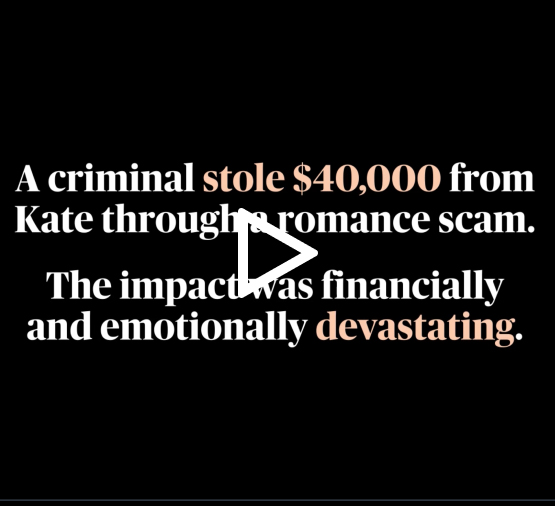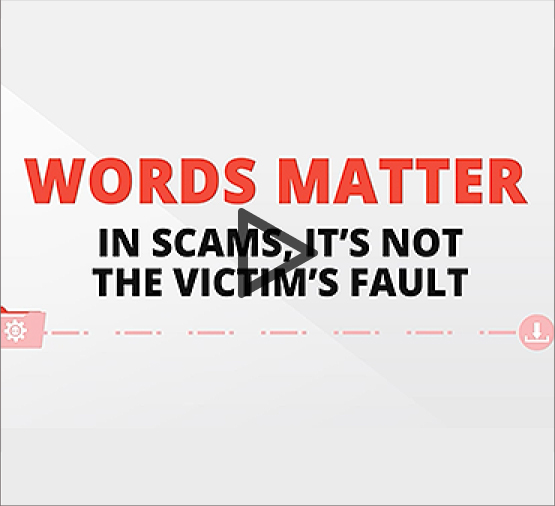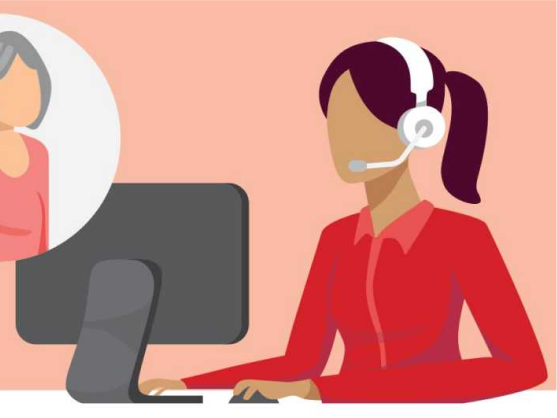Our words matter
when it comes
to fraud.
Your relative or friend didn’t
get duped. It was a crime.
Your relative or friend didn’t
get duped. It was a crime.
Let’s change how we speak about fraud victims.
Criminals steal billions of dollars from consumers every year through fraud. Victims of these crimes can be someone you know like your mom, dad, uncle, aunt or friend. In most cases, the person was trying to help a loved one or solve a problem.
The experience can be financially and emotionally devastating for victims and their families. We often shame the victims of these crimes and blame them for “falling for it,” making their devastation even worse. Let’s put an end to victim blaming and keep the focus on the criminals.
If we used more empathy and support in how we talk to or about fraud victims, the effect could be enormously positive.
Positive outcomes:
- More people will report fraud
- Family relationships will be protected
- Police will take it seriously
- Prosecutors will take more cases
Don’t let victims suffer twice.
Victim blaming can come from strangers, friends or family. It’s important to blame criminals and not the people hurt by fraud. Learn the significance your words can have on victims of fraud.
Here are examples of what to say:
Say this:
This is not your fault.

Not that:
I can’t believe you fell
for it.

Say this:
A criminal defrauded her.

Not that:
She was duped by a
scam.



Take the quiz to see the words all of us may not realize we are using and how they can trigger shame in victims. Start below.
What were you
thinking?


CORRECT!
This statement
blames the victim.
Fraud criminals have a playbook: get the target into a heightened emotional state. They know it’s hard to access logical thinking when emotions are engaged.
Say this instead:
“The criminal knew how to make you react from emotions rather than logic. I’m sorry this happened to you.”
What were you
thinking?


INCORRECT!
This statement
blames the victim.
Fraud criminals have a playbook: get the target into a heightened emotional state. They know it’s hard to access logical thinking when emotions are engaged.
Say this instead:
“The criminal knew how to make you react from emotions rather than logic. I’m sorry this happened to you.”
How much money
did they steal from
you?


CORRECT!
This statement
supports the victim.
This represents the crime of fraud over something the victim did or didn’t do.
A common reaction is to ask,
“How much did you give them?”
How much money
did they steal from
you?


INCORRECT!
This statement
supports the victim.
This represents the crime of fraud over something the victim did or didn’t do.
A common reaction is to ask,
“How much did you give them?”
You are a crime victim;
let’s report it to law
enforcement.


CORRECT!
This statement
supports the victim.
Many people are not aware that fraud is a crime. It is also severely under-reported, largely because of shame.
Offer to help with reporting to law enforcement or contact the AARP Fraud Watch Network Helpline toll-free at 877-908-3360.
You are a crime victim;
let’s report it to law
enforcement.


INCORRECT!
This statement
supports the victim.
Many people are not aware that fraud is a crime. It is also severely under-reported, largely because of shame.
Offer to help with reporting to law enforcement or contact the AARP Fraud Watch Network Helpline toll-free at 877-908-3360.
You let your
guard down.


CORRECT!
This statement
blames the victim.
Fraud criminals follow a playbook that is remarkably successful. It’s not about letting your guard down. It’s about being intentionally targeted.
Say this instead:
“Fraud can happen to anyone.
You are not alone.”
You let your
guard down.


INCORRECT!
This statement
blames the victim.
Fraud criminals follow a playbook that is remarkably successful. It’s not about letting your guard down. It’s about being intentionally targeted.
Say this instead:
“Fraud can happen to anyone. You are not alone.”
Falling victim
to a scam is not
your fault.


CORRECT!
This statement
supports the victim.
Fraud victims deserve the dignity and empathy we grant people who experience other kinds of crimes.
Falling victim
to a scam is not
your fault.


INCORRECT!
This statement
supports the victim.
Fraud victims deserve the dignity and empathy we grant people who experience other kinds of crimes.
Why did you
answer your
phone?


CORRECT!
This statement
blames the victim.
This inadvertently blames the victim, which can exacerbate feelings of shame and downplay the severity of the crime.
Say this instead:
“I’m so sorry. Can you share more about what happened?”
Why did you
answer your
phone?


INCORRECT!
This statement
blames the victim.
This inadvertently blames the victim, which can exacerbate feelings of shame and downplay the severity of the crime.
Say this instead:
“I’m so sorry. Can you share more about what happened?”
I can’t believe you
let this happen.


CORRECT!
This statement
blames the victim.
Nobody is immune to fraud, which is growing more pervasive and sophisticated.
Say this instead:
“Fraud can happen to anyone.”
I can’t believe you
let this happen.


INCORRECT!
This statement
blames the victim.
Nobody is immune to fraud, which is growing more pervasive and sophisticated.
Say this instead:
“Fraud can happen to anyone.”
I’m sorry this
happened to you.


CORRECT!
This statement
supports the victim.
The impact of fraud is often financially and emotionally devastating for victims. When family and friends are supportive, it makes a fundamental difference.
I’m sorry this
happened to you.


INCORRECT!
This statement
supports the victim.
The impact of fraud is often financially and emotionally devastating for victims. When family and friends are supportive, it makes a fundamental difference.
Additional AARP Resources
AARP Fraud Watch NetworkTM
AARP Fraud Watch Network is a free resource for all. With AARP as your partner, you’ll learn how to proactively spot scams, get guidance from our fraud specialists if you’ve been targeted and feel more secure knowing that we advocate at the federal, state and local levels to protect consumers and enforce the law.
AARP also provides resources for professional audiences.

Are you an AARP Member?
If you are, you can save on shipping, wireless service and more. Plus, tools to help you keep track of your finances, tips to help you spot and avoid scams and access to unique AARP articles, podcasts and special reports selected just for AARP members. Learn how today.
close
close







